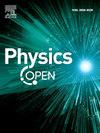论基础科学实验的效用函数
IF 1.4
Q2 Physics and Astronomy
引用次数: 0
摘要
今天,基础科学中的大多数实验都被设计成多用途的:它们的目的不仅仅是测量单个物理量或过程,而是为了提高测量自然系统中许多不同的可观察量的精度,扩展对新现象的搜索,或者排除候选理论的更大相空间。大多数时候,我们追求的是上述目标的结合;通过定义合适的几何形状,选择最有利的材料和适当的检测技术,这种范围的广度为以最佳方式设计测量仪器的任务增加了一层复杂性。全局最优标准的精确定义可能需要实验家就这些目标的相对科学价值达成共识。在这项工作中,我们讨论了为多目的实验制定效用函数的问题,作为使用人工智能工具探索设计空间并协助人类在帕累托前沿找到解决方案的有利步骤。为此,我们考虑粒子物理研究中的两个用例和天体粒子物理中的一个用例;在后一种情况下,我们使用最近开发的优化软件,展示了多目标效用函数的精确定义如何能够显著提高其价值,高于人为设计的探测器布局所提供的价值。本文章由计算机程序翻译,如有差异,请以英文原文为准。
On the utility function of experiments in fundamental science
The majority of experiments in fundamental science today are designed to be multi-purpose: their aim is not simply to measure a single physical quantity or process, but rather to enable increased precision in the measurement of a number of different observable quantities of a natural system, to extend the search for new phenomena, or to exclude a larger phase space of candidate theories. Most of the time, a combination of the above goals is pursued; this breadth of scope adds a layer of complexity to the already demanding task of designing the measurement apparatus in an optimal way, by defining suitable geometries and choosing the most advantageous materials and appropriate detection technologies. The precise definition of a global optimality criterion may then require experimentalists to find a consensus on the relative scientific worth of those goals.
In this work we discuss the problem of formulating a utility function for multipurpose experiments, as an enabling step to employ artificial intelligence tools to explore the design space and assist humans in finding solutions at the Pareto front. For that purpose, we consider two use cases in particle physics research and one in astro-particle physics; in the latter case we show, using a recently developed optimization software, how the precise definition of a multi-target utility function may enable a significant increase of its value above that offered by human-designed detector layouts.
求助全文
通过发布文献求助,成功后即可免费获取论文全文。
去求助
来源期刊

Physics Open
Physics and Astronomy-Physics and Astronomy (all)
CiteScore
3.20
自引率
0.00%
发文量
19
审稿时长
9 weeks
 求助内容:
求助内容: 应助结果提醒方式:
应助结果提醒方式:


